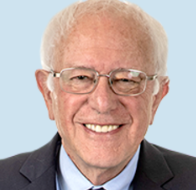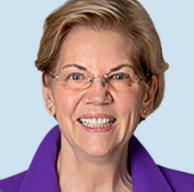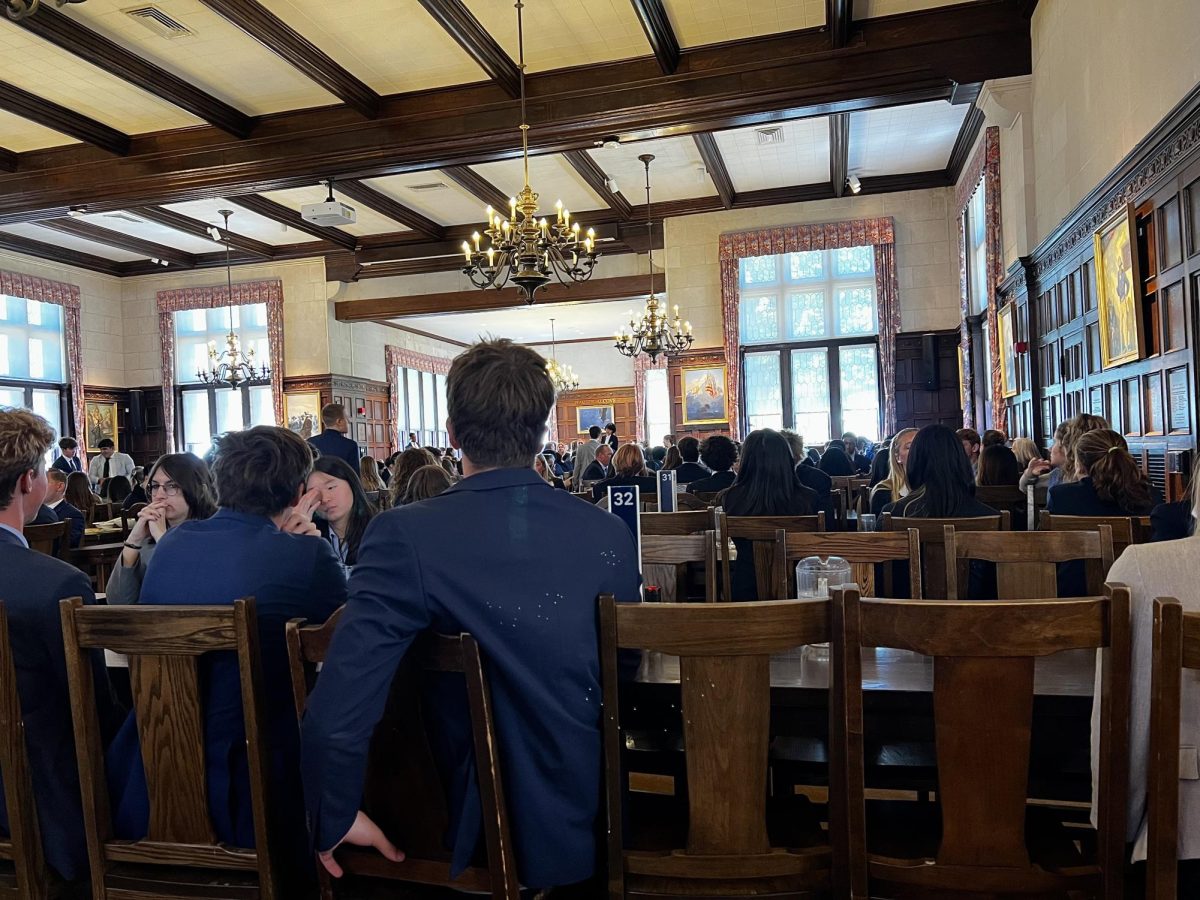Has a busy schedule or detachment from what happens off-campus disinclined you from reading up on the race for the White House? Fear not. With the 2020 Democratic primaries beginning in Iowa on February 3, the Hill News thought it appropriate to provide you with a guide to the top potential party nominees.
 Vice President Joseph R. Biden, Jr. (FiveThirtyEight chance of winning: 42%): The running mate of former President Barack Obama jumped into the primary race in April, and since then, has focused his candidacy on “restoring the soul of America.” Policy-wise, Biden is running in the party’s ideologically moderate lane, advocating for the incrementalist expansion of Obamacare and a federal plan to achieve net-zero carbon emissions by 2050 over the Medicare-for-All and “net-zero by 2030” platforms of progressive rivals Sanders and Warren (see below). What’s unique: he notably calls for a more internationalist foreign policy and, separately, has a slight conservative twang on civil issues like marijuana legalization. Biden is relying on strong support from two larger, more moderate voting blocs – racial minorities and the white working-class – on his way to the nomination.
Vice President Joseph R. Biden, Jr. (FiveThirtyEight chance of winning: 42%): The running mate of former President Barack Obama jumped into the primary race in April, and since then, has focused his candidacy on “restoring the soul of America.” Policy-wise, Biden is running in the party’s ideologically moderate lane, advocating for the incrementalist expansion of Obamacare and a federal plan to achieve net-zero carbon emissions by 2050 over the Medicare-for-All and “net-zero by 2030” platforms of progressive rivals Sanders and Warren (see below). What’s unique: he notably calls for a more internationalist foreign policy and, separately, has a slight conservative twang on civil issues like marijuana legalization. Biden is relying on strong support from two larger, more moderate voting blocs – racial minorities and the white working-class – on his way to the nomination.
If Biden was a Hill dormitory? Upper School West. Old-school and in the center of campus.
 Senator Bernie Sanders (28%): Four years after his first presidential run, Bernie is at the forefront of a much more intimidating campaign, outraising each of his opponents even without the support of corporate political action committees (PACs). But this time around, he’s still playing the old hits. Bernie is by-and-large the most progressive candidate in the race, advocating for Medicare-for-All (eliminating most functions of private health insurance), free four-year public college and the cancellation of all student loan debt, a $16 trillion Green New Deal to balance carbon emissions by 2030, and a $15 federal minimum wage; his platform is essentially the yardstick by which pundits measure truly how progressive another candidate’s policy is. Bernie is relying on mass support from younger voters, and to a lesser extent, the Hispanic and white working-class communities.
Senator Bernie Sanders (28%): Four years after his first presidential run, Bernie is at the forefront of a much more intimidating campaign, outraising each of his opponents even without the support of corporate political action committees (PACs). But this time around, he’s still playing the old hits. Bernie is by-and-large the most progressive candidate in the race, advocating for Medicare-for-All (eliminating most functions of private health insurance), free four-year public college and the cancellation of all student loan debt, a $16 trillion Green New Deal to balance carbon emissions by 2030, and a $15 federal minimum wage; his platform is essentially the yardstick by which pundits measure truly how progressive another candidate’s policy is. Bernie is relying on mass support from younger voters, and to a lesser extent, the Hispanic and white working-class communities.
If Bernie was a Hill dormitory? Wendell. “Hype” and far to the left (given you are walking up the hill).
 Senator Elizabeth Warren (7%): The Massachusetts senator is running as a progressive who is particularly more technocratic than her absolutist rival. Warren is running on her signature ultra-millionaire wealth tax, which she says will fund $3 trillion in targeted climate change prevention, construction of low-income housing, and the cancellation of debt for more than 95% of Americans. (Note: Warren is pushing for Medicare-for-All but has been criticized by progressives for not aspiring to immediately eliminate private insurers.) She differs from her Vermont counterpart Sanders in foreign policy; he prioritizes strict non-interventionism, while she emphasizes the importance of American internationalism, leading the two to disagree on issues like Venezuela policy. To win, Warren is relying on college-educated voters and white women.
Senator Elizabeth Warren (7%): The Massachusetts senator is running as a progressive who is particularly more technocratic than her absolutist rival. Warren is running on her signature ultra-millionaire wealth tax, which she says will fund $3 trillion in targeted climate change prevention, construction of low-income housing, and the cancellation of debt for more than 95% of Americans. (Note: Warren is pushing for Medicare-for-All but has been criticized by progressives for not aspiring to immediately eliminate private insurers.) She differs from her Vermont counterpart Sanders in foreign policy; he prioritizes strict non-interventionism, while she emphasizes the importance of American internationalism, leading the two to disagree on issues like Venezuela policy. To win, Warren is relying on college-educated voters and white women.
If Warren was a Hill dormitory? Upper School East. The hegemon of girls’ dorms and in the center of campus action.
 Mayor Pete Buttigieg (7%): Mayor Pete’s political rise to a top-tier candidate can be attributed to his Obama-like message of liberal generational change. When compared to Sanders and Warren, Pete functions as a moderate, but is a bit to the left of Biden. His platform is broadly liberal, but he has proposed slimmer, more targeted redistribution of wealth – this means, for example, a “Medicare for All Who Want It” plan that leaves private insurance untouched rather than abolishing it, and free four-year public college for lower-class Americans rather than everyone. (These plans allow Mayor Pete to propose tax increases that are comparatively smaller than those of his progressive rivals.) The mayor’s campaign has done a good job intertwining his Christian faith with a socially liberal message, leading him to gain support among college-educated moderates.
Mayor Pete Buttigieg (7%): Mayor Pete’s political rise to a top-tier candidate can be attributed to his Obama-like message of liberal generational change. When compared to Sanders and Warren, Pete functions as a moderate, but is a bit to the left of Biden. His platform is broadly liberal, but he has proposed slimmer, more targeted redistribution of wealth – this means, for example, a “Medicare for All Who Want It” plan that leaves private insurance untouched rather than abolishing it, and free four-year public college for lower-class Americans rather than everyone. (These plans allow Mayor Pete to propose tax increases that are comparatively smaller than those of his progressive rivals.) The mayor’s campaign has done a good job intertwining his Christian faith with a socially liberal message, leading him to gain support among college-educated moderates.
If Mayor Pete was a Hill dormitory? Dell. Newer, well-kept, and (kind of) generic.
 The field (0.4%): Senator Amy Klobuchar is a Midwestern Biden-esque moderate polling well in Iowa, and a good show there could lead to a break-out moment on the national stage. Entrepreneur Andrew Yang polls well among younger voters;
The field (0.4%): Senator Amy Klobuchar is a Midwestern Biden-esque moderate polling well in Iowa, and a good show there could lead to a break-out moment on the national stage. Entrepreneur Andrew Yang polls well among younger voters;

his signature campaign promise of a universal basic income of $1,000 a month is seen as a solution for generational economic change. Billionaires Michael Bloomberg (the former Mayor of New York City) and Tom Steyer have flooded the race with tens of millions  of their own dollars, using mass advertising to gain influence in the moderate and progressive lanes of the race, respectively.
of their own dollars, using mass advertising to gain influence in the moderate and progressive lanes of the race, respectively.
If these candidates were Hill dormitories?
Dutch, Klobuchar (a bit older and far away from campus action). HillRest, Yang (new, snazzy, and unheard of among students of Hill past). Foster and Rolfe, Bloomberg and Steyer (the “castle on the hill” overlookers of the Pottstown that lies outside of the Hill bubble).
 Whichever candidate ends up tasting sweet victory in the primaries will face current President of the United States Donald J. Trump P’98’02 in November’s general election. Trump’s political machine is financed by hundreds of millions of Republican National Committee cash and fueled by white working-class voters, especially those in Midwestern swing states that hold disproportionate political influence. The president broadly advocates for American nationalism, highlighted by his support for restrictions on immigration, barriers that lessen trade with China, and a more potent American military. He is functionally a supporter of low tax rates and Republican economics but is not a pure fiscal conservative like many a Republican congressman (see: the national debt and drug price controls).
Whichever candidate ends up tasting sweet victory in the primaries will face current President of the United States Donald J. Trump P’98’02 in November’s general election. Trump’s political machine is financed by hundreds of millions of Republican National Committee cash and fueled by white working-class voters, especially those in Midwestern swing states that hold disproportionate political influence. The president broadly advocates for American nationalism, highlighted by his support for restrictions on immigration, barriers that lessen trade with China, and a more potent American military. He is functionally a supporter of low tax rates and Republican economics but is not a pure fiscal conservative like many a Republican congressman (see: the national debt and drug price controls).






















